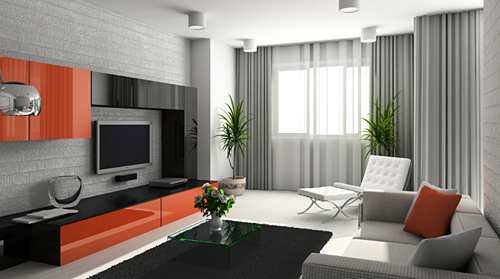A color wheel identifies color families that relate to each other. All colors result from the primary colors which are blue, yellow and red. All other colors are combinations of these basic colors: as an example, if you want brown, you simply mix all three of the primary colors together in equal quantities. To obtain the secondary colors of violet, green and orange, you mix equal quantities of two primary colors together: red and blue produces violet; blue and yellow produces green; and red and yellow produces orange. To obtain tertiary colors you need to mix a larger quantity of one primary color with a smaller amount of another primary color: a reddish-violet is obtained through one part blue with two parts red.
In every color there is a hue and a tone so, for instance, if you have a light blue and a dark blue, blue is the hue. The importance of tone when organizing a color scheme for your decorating project cannot be emphasized enough. Tone represents the reflective quality of the color and its actual density. There is a color scale, graduating from white to black and a saturation scale which relates to a color's boldness and purity. It is a well-known fact that color does affect mood. Warm shades give a feeling of strength and are considered to be cozy colors which radiate warmth in a room. Reds in different shades are now very popular colors for dining rooms, kitchens and bedrooms.











